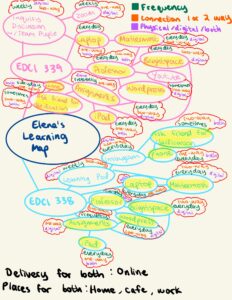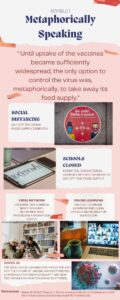Before considering new technologies, institutions should consider the ethics, security, and privacy surrounding the technology. The technology under consideration should be non-discriminatory and unbiased. To ensure the reputation and history of the provider are reliable, it is important to research the suppliers. Additionally, institutions should choose technologies that are accessible and promote diversity while supporting unique educational needs. This may include having audio, visual, and text aids.
Notably, institutions should set a budget when considering adopting new technologies as it can be more costly to invest in ethical practices and this ensures the institution does not go beyond its means. Investing in ethical technologies may influence accessibility and equitability needs as higher costs can mean that not every institution or student may have access.
Researchers have stated that the integration of technology should foster innovative pedagogy and prepare students for society and that this may be achieved by using novel and engaging technologies (Ng, 2015).
It may also be pertinent to review the new technologies’ compatibility with other technologies already utilized by the institution as well as its ease of use to ensure students will be successful using the new media and can develop skills.
When implementing new technology, instructors should consider the values of the school and the educational goals in place to ensure learning outcomes are met. The instructor should account for the demographics of the students to meet equity, accessibility, diversity, inclusivity, and individual learning style needs, as some students may require more support than others. This means everyone’s needs are met and learning can be enhanced.
Additionally, it is important to maintain the privacy and security of the students, thus the technology should be reliable, and approved by the institution.
Finally, for a student-centered approach, the instructor should consider implementing technology that is user-friendly and compatible with the student’s learning skills for their ease of use.
Researchers have found that technology implementation is maximally effective when it aligns with learning outcomes and the institutional environment (Lai & Bower, 2019).
Hidden motivations that may impact the adoption of new technologies are institution cost concerns, maintaining the institution’s reputation, lack of research, and many more aspects that have negative effects on educational outcomes. To reduce costs, institutions may implement technologies that lack accessibility, user-friendliness, diversity, inclusiveness, or other features. Oftentimes technology that is lower cost may not use ethical practices. Additionally, lower-cost technology may not have as effective teaching methods and thus compromise learning outcomes.
If institutions do not research the technology they are implementing they may end up investing in websites that do not inspire meaningful learning and only serve to boost superficial institutional reputations. Without proper research into technologies, institutions may face using technology with limitations on learning, such as limited access to certain features and teaching.
Overall, experts have found that it is important to consider every aspect of technology and that it is not only a valuable tool but a medium that can influence the culture of learning by enhancing social and educational development (Cloete, 2017).
I chose this activity because there are many important considerations to factor in when choosing which technologies may be the most beneficial to learning that I was not aware of. Thus this aligned with my learning goals of how to select what media and networks should be utilized to personalize my learning and additionally to help guide others in their digital learning. Through my research, I learned what to be aware of and what I value in online learning. I feel as though now after my research, I can critically think about my technology use and what my personal beliefs in media ethics are.
References
Cloete, A. L. (2017). Technology and education: Challenges and opportunities. HTS: Theological Studies, 73(3), 1-7.
Lai, J. W., & Bower, M. (2019). How is the use of technology in education evaluated? A systematic review. Computers & Education, 133, 27-42.
Ng, W. (2015). New digital technology in education. Switzerland: Springer.

